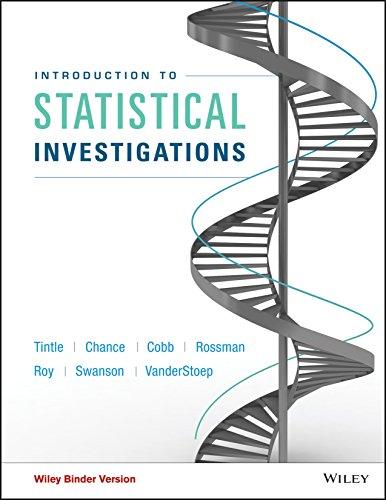Suppose that randomly sampled college students are asked how many hours they typically spend online each day.
Question:
Suppose that randomly sampled college students are asked how many hours they typically spend online each day. You conduct a two-sided test of the null hypothesis that μfemales − μmales = 0, and you also calculate a 95% confidence interval for μfemales − μmales.
a. Describe (in words) what the parameter μfemales − μmales means here.
b. Now suppose that your friend analyzes the same data but with the order of subtraction reversed (males − females, rather than females − males). Describe the impact (if any) on each of the following. In other words, describe how your friend’s findings will compare to yours with regard to each of the following.
i. Distribution of simulated statistics under the null hypothesis
ii. Standard deviation of the simulated statistics under the null hypothesis
iii. Observed value of the statistic (difference in sample means)
iv. Approximate p-value from simulation
v. Value of t-test statistic
vi. p-Value from t-test
vii. Midpoint of confidence interval
viii. Endpoints of confidence interval
ix. Width of confidence interval
c. What is the bottom line: Will you and your friend reach the same conclusions even though you disagreed about the order in which to perform the subtraction (males − females or females − males)? Explain.
The word "distribution" has several meanings in the financial world, most of them pertaining to the payment of assets from a fund, account, or individual security to an investor or beneficiary. Retirement account distributions are among the most...
Step by Step Answer:

Introduction To Statistical Investigations
ISBN: 9781118172148
1st Edition
Authors: Beth L.Chance, George W.Cobb, Allan J.Rossman Nathan Tintle, Todd Swanson Soma Roy





